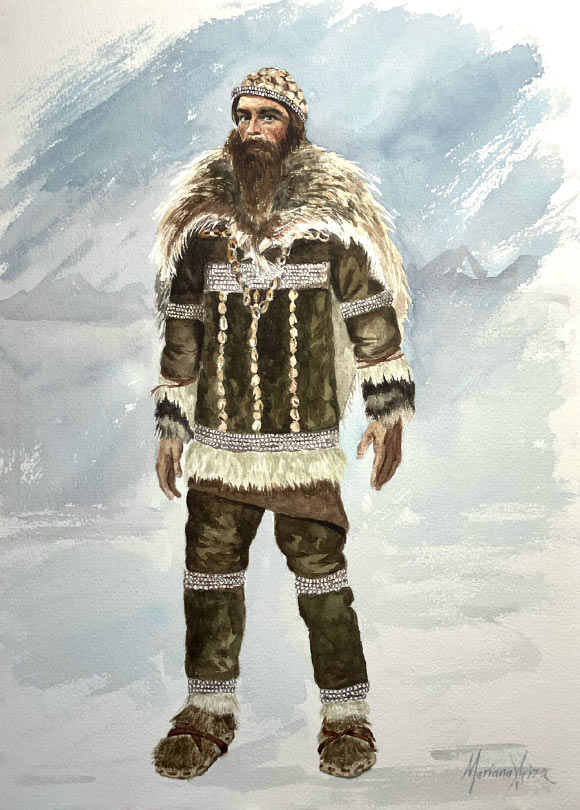Eyed needles were a new technological innovation used to adorn clothing for social and cultural purposes, marking the major shift from clothes as protection to clothes as an expression of identity, according to a team of archaeologists headed by University of Sydney’s Dr. Ian Gilligan.
Eyed needles are among the most iconic of Paleolithic artifacts, traditionally seen as rare indicators of prehistoric clothing, particularly tailoring. Image credit: Mariana Ariza.
Traditionally, archaeologists have associated the emergence of tailored clothes with the invention of eye needles made of bone.
The initial appearance of eyed needles in the archaeological record of northern mid-latitude environments during the latest Ice Age is consistent with a primary function in providing thermal protection.
The earliest known eyed needles appear 40,000 years ago in Siberia, 38,000 years ago in the Caucasus, 30,000 years ago in East Asia, and by 26,000 years ago in Europe.
“Eyed needle tools are an important development in prehistory because they document a transition in the function of clothing from utilitarian to social purposes,” Dr. Gilligan said.
“From stone tools that prepared animal skins for humans to use as thermal insulation, to the advent of bone awls and eyed needles to create fitted and adorned garments, why did we start to dress to express ourselves and to impress others?”
In their new paper, Dr. Gilligan and colleagues reinterpret the evidence of recent discoveries in the development of clothing.
“Why do we wear clothes? We assume that it’s part of being human, but once you look at different cultures, you realize that people existed and functioned perfectly adequately in society without clothes,” Dr. Gilligan said.
“What intrigues me is the transition of clothing from being a physical necessity in certain environments, to a social necessity in all environments.”
“One of the most iconic of Paleolithic artifacts from the Stone Age, eyed needles are more difficult to make when compared to bone awls, which sufficed for creating fitted clothing.”
“Bone awls are tools made of animal bones that are sharpened to a point.”
“Eyed needles are modified bone awls, with a perforated hole (eye) to facilitate the sewing of sinew or thread.”
“As evidence suggests bone awls were already being used to create tailored clothes, the innovation of eyed needles may reflect the production of more complex, layered clothing, as well as the adornment of clothes by attaching beads and other small decorative items onto garments.”
“We know that clothing up until the last glacial cycle was only used on an ad hoc basis.”
“The classic tools that we associate with that are hide scrapers or stone scrapers, and we find them appearing and going away during the different phases of the last ice ages.”
The researchers argue that clothing became an item of decoration because traditional body decoration methods, like body painting with ochre or deliberate scarification, weren’t possible during the latter part of the last Ice Age in colder parts of Eurasia, as people were needing to wear clothes all the time to survive.
“That’s why the appearance of eyed needles is particularly important because it signals the use of clothing as decoration,” Dr. Gilligan said.
“Eyed needles would have been especially useful for the very fine sewing that was required to decorate clothing.”
Clothing therefore evolved to serve not only a practical necessity for protection and comfort against external elements, but also a social, aesthetic function for individual and cultural identity.
“The regular wearing of clothing allowed larger and more complex societies to form, as people could relocate to colder climates while also cooperating with their tribe or community based on shared clothing styles and symbols.”
“The skills associated with the production of clothing contributed to a more sustainable lifestyle and enhanced the long-term survival and prosperity of human communities.”
The team’s paper was published in the journal Science Advances.
_____
Ian Gilligan et al. 2024. Paleolithic eyed needles and the evolution of dress. Science Advances 10 (26); doi: 10.1126/sciadv.adp2887
>>> Read full article>>>
Copyright for syndicated content belongs to the linked Source : Breaking Science News – https://www.sci.news/archaeology/eyed-needle-invention-13057.html
